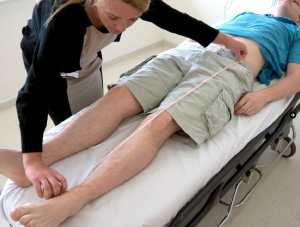

MedFriendly®


Anisomelia
Anisomelia means a pair of limbs (i.e., two arms or two
legs) that are unequal. This will sometimes be
noticeable, such as when one leg is shorter than the
other. When this is the case, it will cause a limp,
although this can be compensated for raising the
shorter foot such as a shoe with a bigger heel or with
use of a fitted device to raise the foot within the shoe.
This is usually done when the difference between the
legs is less than 2-cm.
FEATURED BOOK: Management of Limb Length Discrepancies
When the difference is more than this, it is usually correct by surgery. This can be done
with an osteotomy, in which a bone is cut to lengthen, shorten, or change its alignment.
Another surgical option (specific to children) is epiphysiodesis, which prematurely unites
the rounded end of a long bone (known as the epiphysis) with the middle section of the
bone (known as the diaphysis), which stops it from growing.
As an interesting trivia tidbit, anisomelia, is also a genus of moth. Anisomelia comes from
the Greek word "an" meaning "not," the Greek word "isos" meaning "equal," and the
Greek word "melos" meaning "limb." Put the words together and you have "not equal
limbs."
"Where Medical Information is Easy to Understand"™















